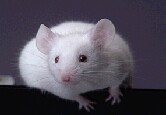Limited blood COHb increase and improved survival during severe CO poisoning with phototherapy
THURSDAY, Aug. 13, 2015 (HealthDay News) — Phototherapy of exposed lungs increases the carbon monoxide (CO) elimination rate in CO-poisoned mice, according to an experimental study published online July 27 in the American Journal of Respiratory and Critical Care Medicine.
Noting that CO binds to hemoglobin (Hb) forming carboxyhemoglobin (COHb) and produces tissue damage, Luca Zazzeron, M.D., from Massachusetts General Hospital and Harvard Medical School in Boston, and colleagues examined whether illumination of the lungs of CO-poisoned mice will cause dissociation of COHb from blood transiting the lungs, releasing CO into alveoli. To examine the effects of direct lung illumination on the CO elimination rate, the authors developed a model for CO poisoning in anesthetized and mechanically-ventilated mice. They tested light at wavelengths between 532 and 690 nm.
The researchers found that phototherapy of exposed lungs at 532, 570, 592, and 628 nm dissociated CO from Hb and doubled the rate of elimination of CO. Administration of phototherapy during severe CO poisoning limited the increase in blood COHb and correlated with improved survival rate. The rate of CO elimination was increased with non-invasive trans-esophageal phototherapy delivered to murine lungs via an optical fiber, while avoiding a thoracotomy.
“Future development and scaling-up of lung phototherapy for patients with CO exposure may provide a significant advance for treating and preventing CO poisoning,” the authors write.
One author received support from the Leducq Fondation.
Full Text (subscription or payment may be required)
Copyright © 2015 HealthDay. All rights reserved.








